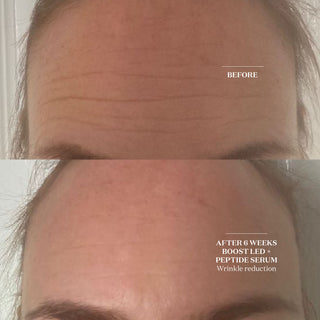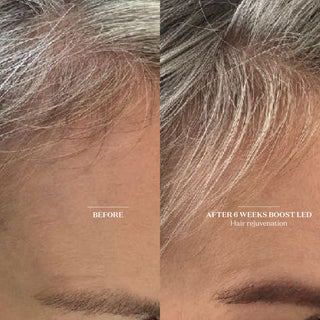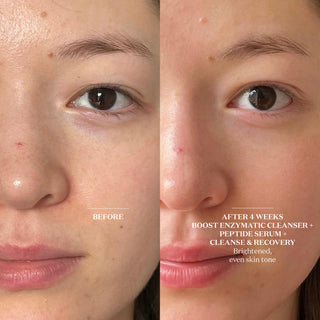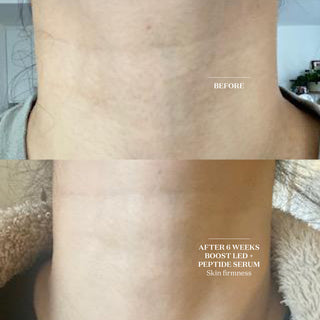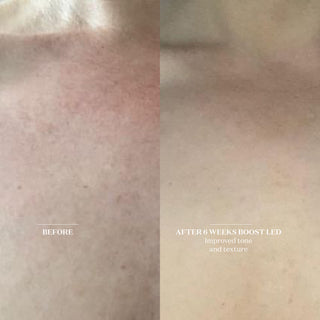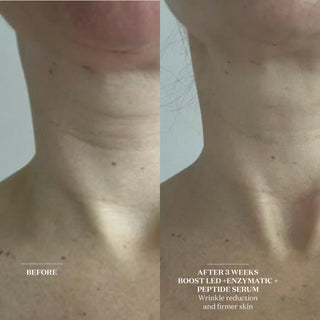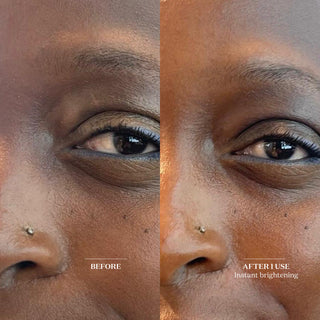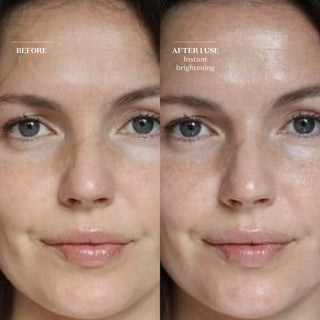Clinical Studies

Our technology is backed by over 30 published, peer reviewed clinical studies that validate our technology and support our clinical claims and safety information. A selection of clinical studies and papers are available to read here.
Use: 10 minutes a day, 3 days a week for 4 weeks
Clinical Claims:
- 36% reduction of wrinkles at 4 weeks post treatment
- Improves fine lines, evens skin tone and texture, increases firmness and reduces redness
- 95% of people said after a course of treatments their skin tone had visibly improved, their skin texture felt smoother and their skin felt firmer and tighter
- 98% of people who underwent a course of 12 treatments said their skin felt firmer
- 96% of people agreed that their fine lines appeared less visible after 12 treatments
- 95% of people agreed that their skin appeared visibly brighter and plumper after 12 treatments.
Use: 10 minutes a day, 3 days a week for 4 weeks
Clinical Claims:
- Improves décolletage lines, evens skin tone and texture and reduces redness
- 89% Saw a reduction in décolletage lines
- 83% Saw reduction in décolletage pigmentation
- 78% Saw an improvement in their skin texture
- 84% reported an improvement in their skins appearance
A study to determine the efficacy of combination led light therapy (633 nm and 830 nm) in facial skin rejuvenation.
Russell et al.
https://pubmed.ncbi.nlm.nih.gov/16414908/
A prospective randomised placebo controlled split face clinical study on led for skin rejuvenation.
Lee SY et al.
https://pubmed.ncbi.nlm.nih.gov/17566756/
A Study to Determine the Efficacy of Combination LED Light Therapy (830 nm and 633 nm) in Facial Skin Rejuvenation
Russell BA, Kellett N and Reilly LR.
https://pubmed.ncbi.nlm.nih.gov/16414908/
A Single-Blinded Randomized Controlled Study to Determine the Efficacy of Omnilux Revive Facial Treatment in Skin Rejuvenation
Bhat J, Birch J, Whitehurst C and Lanigan SW.
https://pubmed.ncbi.nlm.nih.gov/15909229/
The use of diode therapy in the of photoaged skin.Baez et al. https://pubmed.ncbi.nlm.nih.gov/17760698/
A Near Infrared LED-Based Rehabilitation System: Initial Clinical Experience
Baxter GD, Bleakley C, Glasgow P and Calderhead RG. https://www.researchgate.net/publication/272728263_Anear-Infrared_Led-Based_Rehabilitation_System_Initial_Clinical_Experience
Combined Infrared Laser and LED Therapy for Post Mastectomy Pain and Discomfort: A Case Report
Trelles MA and Calderhead RG.
https://www.jstage.jst.go.jp/article/islsm/14/1/14_1_41/_pdf
Low level laser therapy for sports injuries. Laser therapy, 13-OR.
Morimoto, Y., Saito, A., & Tokuhashi, Y.
https://www.researchgate.net/publication/258041326_Low_level_laser_therapy_for_sports_injuries
The use of low level laser therapy (LLLT) for musculoskeletal pain. MOJ orthopedics & rheumatology, 2(5).Cotler, H. B., Chow, R. T., Hamblin, M. R., & Carroll, J. https://medcraveonline.com/MOJOR/the-use-of-low-level-laser-therapy-lllt-for-musculoskeletal-pain.html
Infrared LED irradiation applied during high-intensity treadmill training improves maximal exercise tolerance in postmenopausal women: a 6- month longitudinal study. Lasers in medical science, 28(2), 415- 422.
Paolillo, F. R., Corazza, A. V., Borghi-Silva, A., Parizotto, N. A., Kurachi, C., & Bagnato, V. S. (2013).
https://www.researchgate.net/publication/221881567_Infrared_LED_irradiation_applied_during_high-intensity_treadmill_training_improves_maximal_exercise_tolerance_in_postmenopausal_women_A_6-month_longitudinal_study
The effects of infrared laser and medical treatments on pain and serotonin degradation products in patients with myofascial pain syndrome.
Ceylan Y et al.
https://pubmed.ncbi.nlm.nih.gov/14628149/
Effect of low-Intensity Laser on Blood Pressure, Serotonin and Cortisol.
Jurado S R, et al.
https://www.ajer.org/papers/Vol-8-issue-5/ZZB0805220223.pdf
Effects of lights of different colour temperature on the nocturnal changes in core temperature and melatonin in humans.
Morita T, el al.
https://pubmed.ncbi.nlm.nih.gov/8979406/
Circadian Rythmn Sleep Disorders.
Lirong Zhu, et al.
https://pubmed.ncbi.nlm.nih.gov/23099133/
Botulinum toxin A (BT-A) versus low-level laser therapy (LLLT) in chronic migraine treatment: a comparison
Loeb LM, et al.
https://pubmed.ncbi.nlm.nih.gov/30427505/
The Light Salon chooses to use blue 415nm in the salon only due to the curative nature of the treatment and its lack of suitability for all skin types.
Blue light is brilliantly effective when used on specific skin types presenting acne, blemishes, excessive oiliness, blackheads and whiteheads. However, on skin that does not present any of those characteristics, there is no benefit for using blue light. It does not work as a preventative – it works as a cure when the specific condition is present.
This means that, even in a combination capacity, it's not for all skin types. In addition to this, if pigmentation is present on the skin, blue light can make it more visible and dull the complexion due to the characteristics of the wavelength and treatment.
Blue and Red Light Combination LED Phototherapy for Acne Vulgaris in Patients with Skin Phototype IV
Lee SY, You CE and Park MY.
https://pubmed.ncbi.nlm.nih.gov/17111415/
Combination Blue (415 nm) and Red (633 nm) LED Phototherapy in the Treatment of Mild to Severe Acne Vulgaris
Goldberg DJ and Russell BA.
https://pubmed.ncbi.nlm.nih.gov/16766484/
A Study to Determine the Effect of Combination Blue (415 Nm) and Near-Infrared (830 Nm) Light-Emitting Diode (LED) Therapy for Moderate Acne VulgarisSadick NS. https://pubmed.ncbi.nlm.nih.gov/19391058/
Results
Helps with: Redness - Inflammation - Rosacea - Breakouts - Skin tone - Wrinkles - Hydration - Scalp Health - Hair rejuvenation
